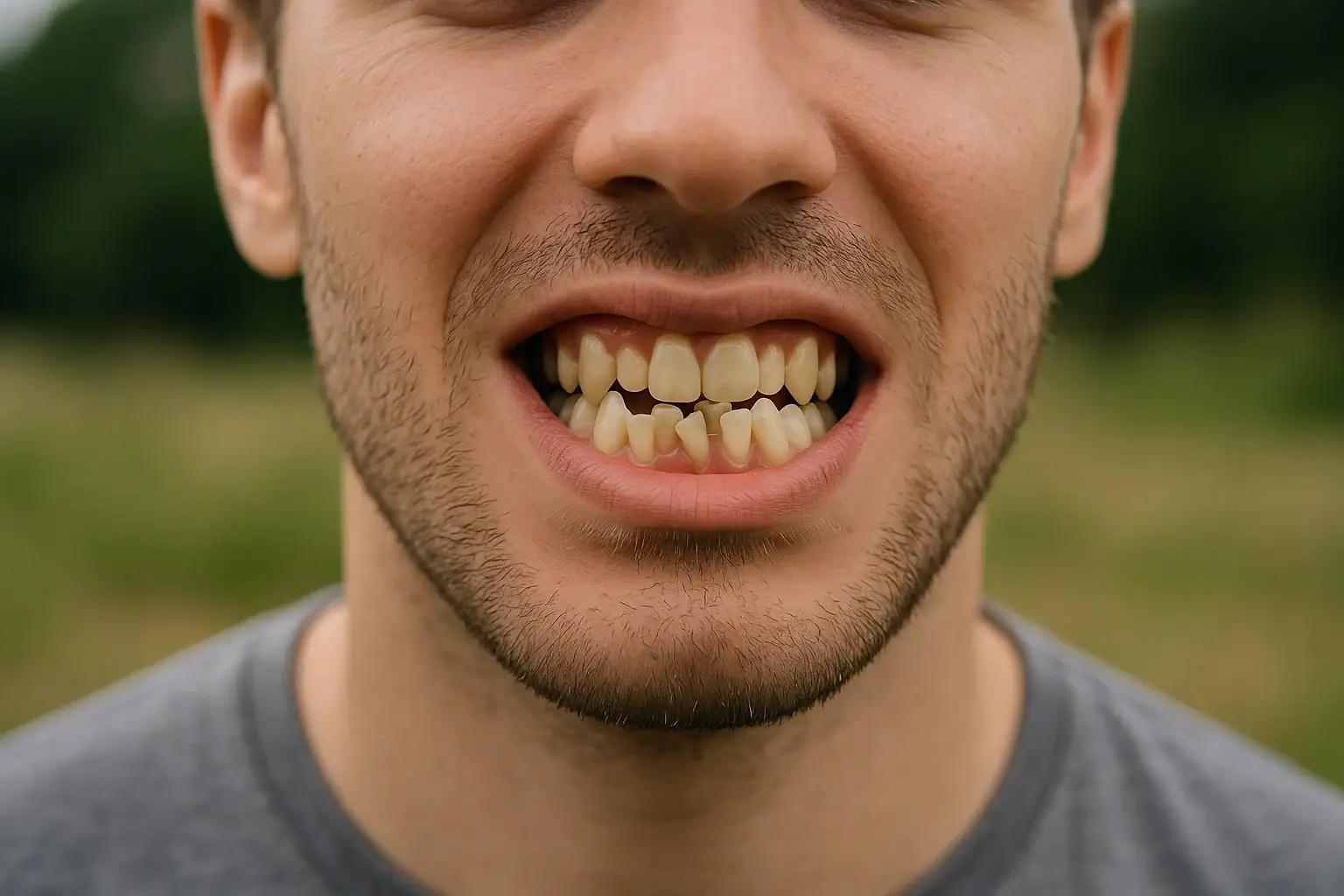Menu
Free Consultation

A healthy bite is essential not only for chewing and speaking but also for maintaining long-term oral health. When your upper and lower teeth do not align properly, the condition is called malocclusion. This misalignment can cause discomfort, affect appearance, and lead to complications if left untreated.
In this blog post, we’ll cover everything you need to know about malocclusion of teeth, including its causes, symptoms, types (like Class 2 malocclusion and Class 3 malocclusion), and how to fix it. Whether you're searching for “what is malocclusion” or “can malocclusion be fixed,” this comprehensive guide will answer all your questions.
💡 Quick Fact: Malocclusion is the third most common oral health problem globally, after tooth decay and gum disease.
The term malocclusion refers to an improper alignment of the teeth when the jaws are closed. It literally means “bad bite.” While mild cases might not cause significant problems, more severe malocclusions can affect speech, appearance, and dental health.
A malocclusion is a misalignment between the upper (maxillary) and lower (mandibular) teeth. It may involve crowding, spacing, overbite, underbite, or crossbite.
Understanding the causes of malocclusion helps in identifying the right treatment strategy. Several factors may contribute to this condition:
Malocclusion often runs in families. Inherited jaw shapes or tooth size discrepancies can contribute to misalignment.
Prolonged thumb-sucking, pacifier use beyond age 3, or tongue thrusting can push teeth out of alignment.
Losing baby teeth too early without space maintainers can lead to teeth shifting improperly.
Ill-fitting crowns, fillings, or dentures can disturb the bite.
A broken jaw or facial injury during development can affect how teeth align.
Growths in the mouth or jaw may cause displacement of teeth.
🧬 Interesting Note: The size of your jaw compared to the size of your teeth plays a crucial role in whether malocclusion occurs.
Not all malocclusions are obvious at first glance. Here are common signs:
🔍 Self-Test: Do your upper teeth overlap significantly with your lower ones? Do you struggle with certain speech sounds? You may have malocclusion.
Malocclusion is classified into three main categories:
📸 Orthodontists often use cephalometric X-rays to assess and classify bite types.
To diagnose a malocclusion, a dentist or orthodontist will:
🦷 Early orthodontic evaluations are recommended by age 7 to spot malocclusion during jaw development.
If you're wondering “how to fix malocclusion”, several dental and orthodontic options are available depending on age, severity, and overall oral health.
Traditional metal braces are one of the most effective treatments for all types of malocclusion. They apply continuous pressure to move teeth into alignment.
Aesthetic and removable, clear aligners are popular among teens and adults. They work best for mild to moderate cases.
Expanders, retainers, and headgear may be used in growing children to guide jaw development and tooth movement.
In cases of overcrowding, teeth may be removed to create space for proper alignment.
For severe Class 2 or Class 3 malocclusion caused by skeletal misalignment, jaw surgery may be required to correct the jaw structure.
If malocclusion is caused by improper fillings or crowns, adjusting the restorations may fix the problem.
Yes. Malocclusion can be corrected at any age, although treatment may take longer in adults due to reduced bone flexibility.
🧓 Adult orthodontics is more common than ever, thanks to advancements in discreet aligner technology.
Leaving malocclusion of teeth untreated may lead to:
While not all forms can be prevented (especially those caused by genetics), some preventive steps include:
Malocclusion is a misalignment of the teeth and jaws, resulting in an abnormal bite.
It refers to the condition where the upper and lower teeth do not fit together properly.
Treatment options include braces, aligners, dental appliances, surgery, or extractions depending on severity.
Yes, malocclusion is treatable in both children and adults with the appropriate orthodontic intervention.
Common causes include genetics, childhood habits, early tooth loss, jaw injuries, and poor dental work.
Whether it's a minor bite irregularity or a severe jaw misalignment, malocclusion can impact both oral health and quality of life. Fortunately, modern orthodontic solutions make it easier than ever to correct bite problems effectively and discreetly.
If you or your child show signs of malocclusion, consult with an orthodontist for an early evaluation. Addressing the issue now can save you from costly and painful complications later on.
✅ A healthy bite is a beautiful bite. Take the first step toward alignment today!
